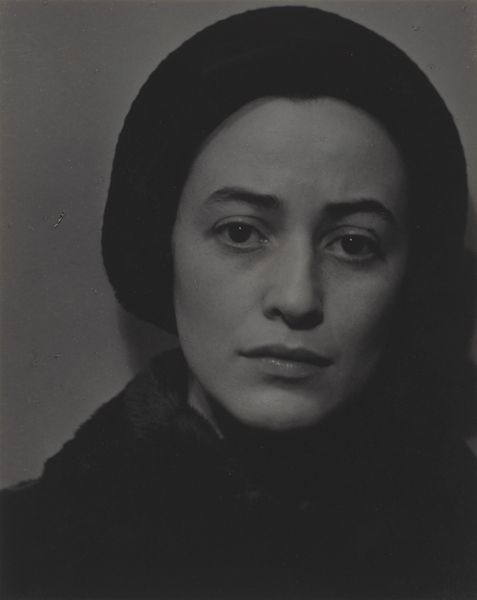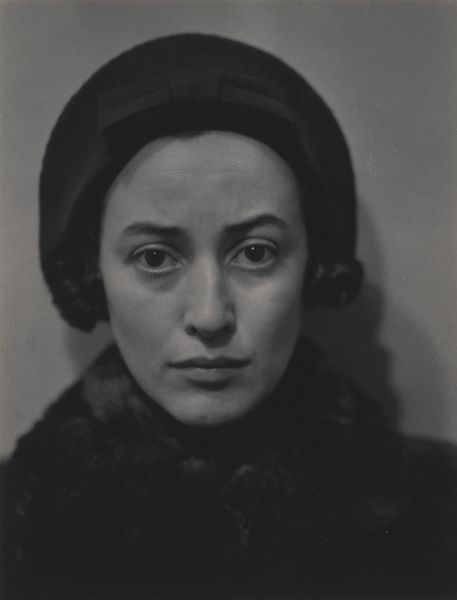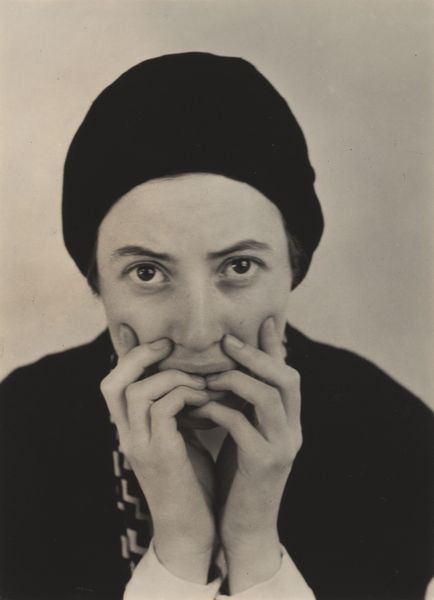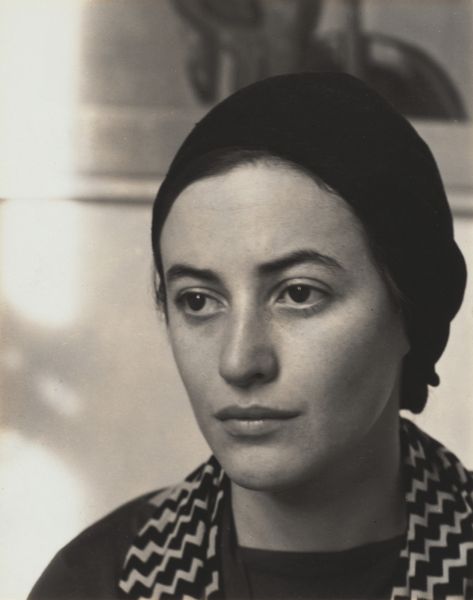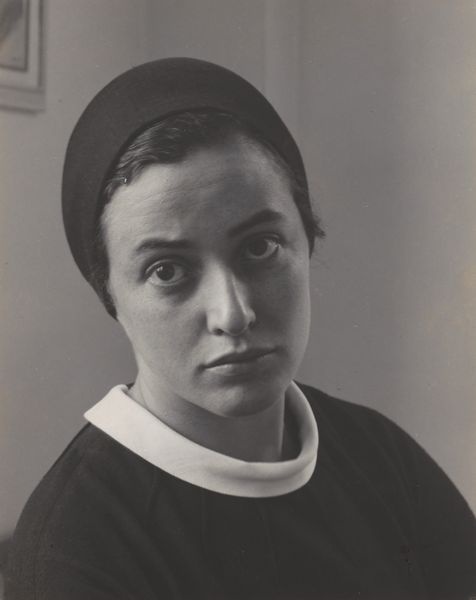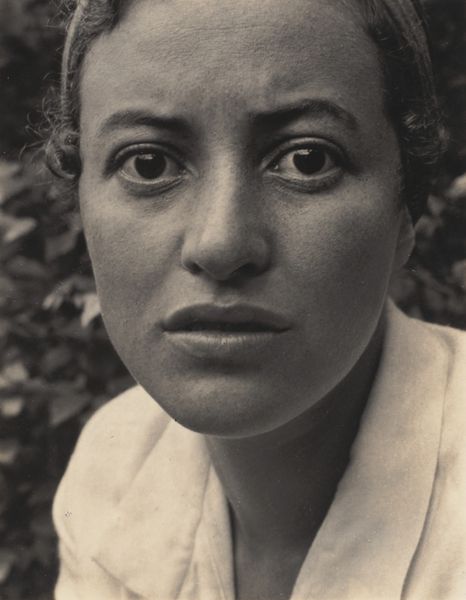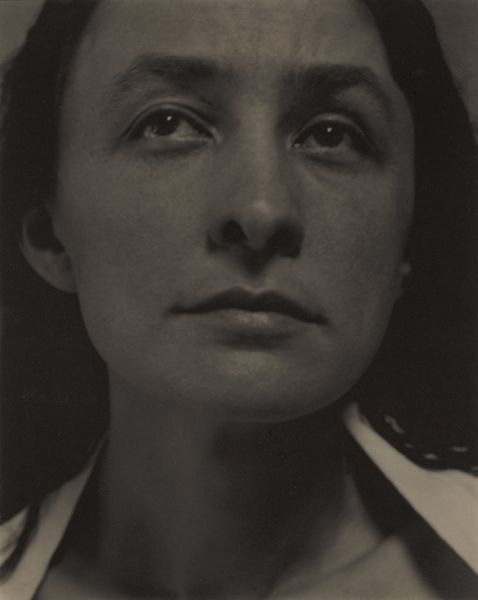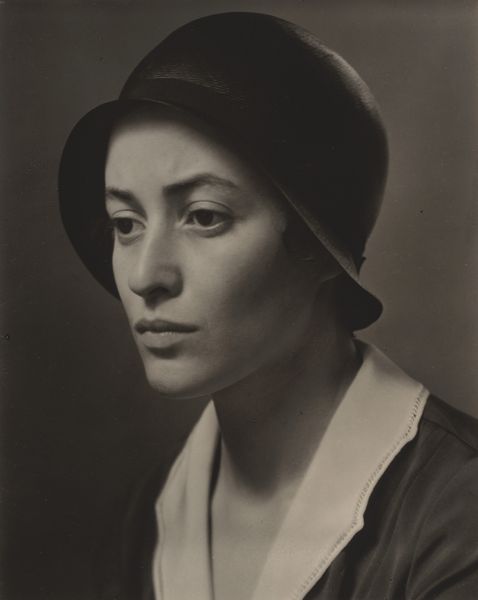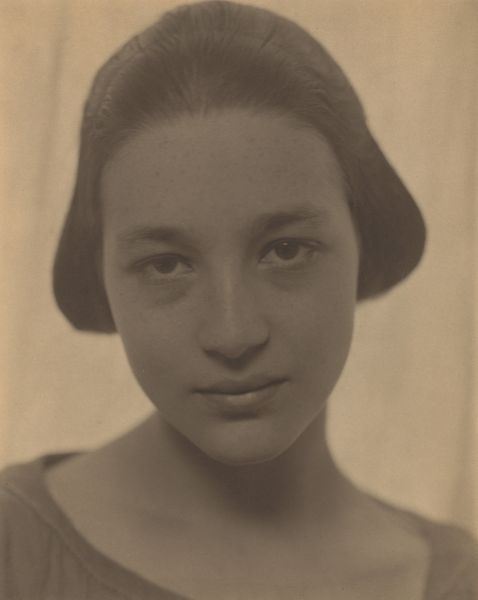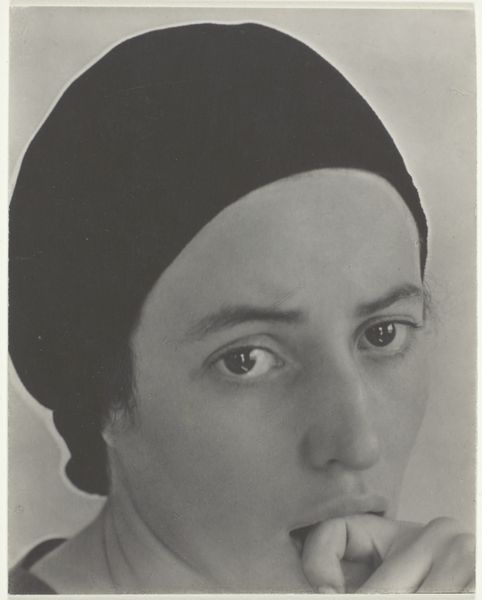
photography, gelatin-silver-print
#
portrait
#
pictorialism
#
photography
#
gelatin-silver-print
#
modernism
Dimensions: sheet (trimmed to image): 11.4 × 8.9 cm (4 1/2 × 3 1/2 in.) mount: 31.9 × 25.2 cm (12 9/16 × 9 15/16 in.)
Copyright: National Gallery of Art: CC0 1.0
Curator: Here we have Alfred Stieglitz's gelatin silver print, "Dorothy Norman," circa 1931. Editor: It’s a very direct portrait, almost severe. The stark monochrome palette emphasizes the sitter's sharp features, that penetrating gaze. Curator: Indeed. Stieglitz was deeply invested in Pictorialism, but by this point was embracing a sharper, more direct Modernist aesthetic. His relationship with Dorothy Norman also reflects shifts in social and artistic circles. Norman became not just a muse but a colleague, heavily involved in his gallery An American Place and in publishing. Editor: The composition is compelling—the way the dark beret anchors the upper part of the frame, juxtaposed with the patterned scarf drawing the eye downward. The averted gaze creates a sense of introspection, of a mind actively at work. It isn’t a passive beauty study. Curator: Certainly not. Norman was a fiercely independent thinker. The portrait reflects the dynamic intellectual climate of the time, with figures like Norman actively reshaping cultural discourse. It marks a transition where women were increasingly seen as agents of change rather than passive subjects. Stieglitz captured her individuality. Editor: The tonal range is beautiful, from the soft grays of her skin to the deep blacks of the hat and scarf. The play of light across her face is quite subtle. And how her necktie breaks up the portrait, adding geometric contrast, feels modern and purposeful. Curator: And this photograph stands as a historical document of a fascinating and unconventional partnership that played a crucial role in shaping the art scene in early 20th-century America. Stieglitz using his portraiture as a statement to acknowledge the emerging power and position of women in intellectual life. Editor: Looking again, I really am drawn to how Stieglitz composed this to highlight Norman’s intelligence as much as her presence. A powerful and effective photograph, both aesthetically and as a piece of cultural history.
Comments
No comments
Be the first to comment and join the conversation on the ultimate creative platform.

